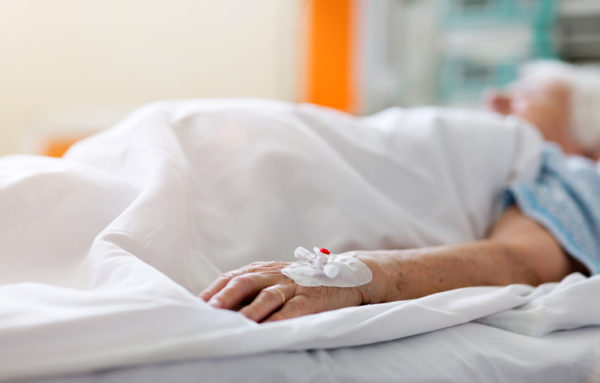Nursing homes have a responsibility to respect dignity
 One of a nursing home's fundamental responsibilities is to maintain a safe environment for residents, and sometimes, that includes dangers posed by residents themselves. People with medical conditions such as dementia may lose control of their behavior and become a threat to themselves or others. In extreme circumstances, physical restraint may be necessary to maintain resident and staff safety.
One of a nursing home's fundamental responsibilities is to maintain a safe environment for residents, and sometimes, that includes dangers posed by residents themselves. People with medical conditions such as dementia may lose control of their behavior and become a threat to themselves or others. In extreme circumstances, physical restraint may be necessary to maintain resident and staff safety.
Restraints might also be used to immobilize residents for medical reasons, such as allowing a confused resident to receive an intravenous medication or treating an orthopedic condition that requires strict positioning of the bones.
However, physical restraint is only appropriate in certain circumstances, and nursing homes must strive to use the least restrictive interventions possible in any such situation. Unfortunately, too many nursing homes overuse physical restraints, and residents can be seriously harmed.
What is a physical restraint, and when can it be used?
A physical restraint is a device or method designed to stop a resident from moving. Some types of physical restraints that may be used in nursing homes include:
- Vests and soft ties
- Hook and loop fasteners
- Lap trays and wheelchair belts
- Leg restraints
- Hand mitts
- Bedrails
- Tightly fitted sheets
- Concave mattresses that sag in the middle
- Orthotic or positioning devices
There are some circumstances in which nursing home residents do need to be physically restrained, but the nursing home must follow standards of care when utilizing restraints. A restraint is a medical device that needs to be authorized by a doctor's order, and restraint protocols must be set in a written plan of care.
Nursing homes need to complete thorough assessments to determine that a restraint is necessary and another intervention cannot be safely used. When a restraint must be used, the nursing home needs to use the least restrictive option.
Moreover, nursing homes must check residents in their restraints every hour to avoid complications such as bedsores and thoroughly document any restraints to ensure that standards of care are followed.
However, this is not always the case on the ground. Some nursing homes utilize physical restraints to keep residents contained and more easily manage their behavior. Restraints might be used in understaffed or dysfunctional facilities because they're cheaper and easier than actually providing high-quality care.
The same goes for the practice of "chemical restraint;" that is, deliberately over-medicating residents to keep them docile. It's an attack on residents' dignity that can cause serious consequences.
The physical and emotional toll of unnecessary restraints
Physical restraints can be exceptionally dangerous when used improperly. Patients who are physically restrained may develop bedsores (pressure ulcers), which in turn can lead to infections and sepsis. Being unable to move and go to the bathroom can lead to incontinence or constipation.
It's not just physical injuries, either; being restrained is a traumatic experience that can cause post-traumatic stress disorder (PTSD), agitation, depression, and loss of self-respect, not to mention undermining trust between residents and staff and potentially leading to further issues with patient care.
That's why it's so critical that nursing homes only use restraints when absolutely medically necessary — not as a method of discipline or for the convenience of staff. It's also why negligent nursing homes need to be held accountable. Unnecessary restraints are a form of nursing home abuse, and residents who are abused have legal recourse under Georgia and federal law.
If your loved one was restrained in a nursing home, demand answers — and know your legal rights. Contact the Law Office of George S. Johnson, LLC for a free, confidential consultation.
